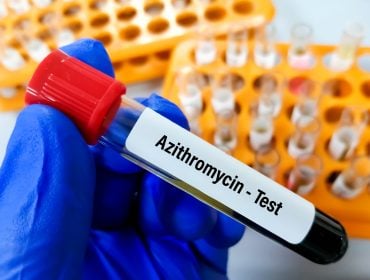Oral Gonorrhea
On our blog and website, we’ve written several articles on gonorrhea, gonorrhea symptoms, testing, and treatment. This has been done to increase awareness about the prevalence of sexually transmitted infections and provide information promoting prevention and early treatment. In this article, we will delve into the trends of oral gonorrhea in the United States based on statistics and research. We hope that by providing this information, our readers will gain a better understanding of the risks associated with sex and how to protect themselves from this common STI, and how to get tested to control their sexual health.
Gonorrhea Oral
Gonorrhea is a sexually transmitted infection that is caused by the bacterium Neisseria gonorrhoeae. It can affect the genitals, rectum, and throat and is most common among young people ages 15-24 years old. Symptoms of gonorrhea can vary depending on where in the body it is present but may include a burning sensation during urination, increased vaginal discharge, and painful or swollen testicles. The bacteria that cause gonorrhea are usually spread through sexual contact, including oral sex. Treatment for gonorrhea typically involves antibiotics prescribed by a doctor.
Definition of Oral Gonorrhea
Oral gonorrhea is an infection caused by the bacteria Neisseria gonorrhoeae in the throat or mouth area. It is spread through oral sex with someone infected with this bacteria. Symptoms of oral gonorrhea may include sore throat std, trouble swallowing, and swollen glands in the neck area.

Oral Gonorrhea Symptoms
The symptoms of oral gonorrhea depend on where in the body it is present and how long it has been there before being diagnosed and treated. Common symptoms include a sore throat that does not go away after a few days, difficulty swallowing, and swollen glands in the neck area. Other symptoms may include pain when swallowing food or liquids, white spots on the back of your throat or tonsils, bad breath, fever, and fatigue.
Oral Gonorrhea Causes
Gonorrhea is usually spread through sexual contact with someone infected with this bacteria. This includes oral sex and other forms of sexual contact, such as vaginal or anal intercourse, without using protection, such as condoms or dental dams, to prevent transmission from one person to another. It can also be passed from mother to baby during childbirth if left untreated during pregnancy.
Oral Gonorrhea Treatment
When diagnosing and treating oral gonorrhea, there are a few important steps to consider.
Diagnostic Tests for Oral Gonorrhea
The best way to diagnose oral gonorrhea is through a quick swab of the mouth or throat. A healthcare provider can do this test and will provide an accurate diagnosis of the infection. In some cases, additional tests may be recommended to rule out other possible infections or complications. We offer gonorrhea tests on our website.
Recommended Treatments for Oral Gonorrhea
Currently, the Centers for Disease Control and Prevention (CDC) recommend treating oropharyngeal gonorrhea with two antibiotics: ceftriaxone and azithromycin. A dose of 500 mg of intramuscular ceftriaxone is typically prescribed as the primary treatment for gonorrhea, followed by 1 gram of azithromycin taken orally in a single dose. It’s essential to take all medications as prescribed and finish the entire course of antibiotics to ensure the infection has been completely treated.
Possible Risks Associated with Oral Gonorrhea Treatment
Although most people respond well to treatment for oral gonorrhea, there are some potential risks associated with taking antibiotics for this type of infection. These include allergic reactions, nausea, vomiting, diarrhea, abdominal pain, and yeast infections. It’s important to discuss any potential side effects with your healthcare provider before beginning treatment so that you can be aware of any potential risks associated with taking antibiotics for this type of infection.

Oral Gonorrhea In The United States
According to the Centers for Disease Control and Prevention (CDC), in 2018, there were over 550,000 cases of gonorrhea reported in the United States. Of these cases, approximately 11% were pharyngeal (throat) gonorrhea.
In addition, research has shown that men who have sex with men (MSM) are more likely to contract pharyngeal gonorrhea than heterosexuals. A study published in 2019 found that among MSM, the prevalence of pharyngeal gonorrhea ranged from 2-11%.
It is important to note that if left untreated, oral gonorrhea can lead to serious health complications such as pelvic inflammatory disease and infertility in women. The best way to prevent this STI is by practicing safe sex and using condoms during sexual activity. Additionally, getting tested regularly for STIs can help identify any infections early on so they can be treated quickly and effectively.
Prevention of Oral Gonorrhea
Oral gonorrhea is a sexually transmitted disease (STD) that can be spread through oral sex. To prevent the spread of this infection, it’s important to practice safe sex and use protection correctly and consistently during sexual contact. Additionally, getting vaccinated for STDs can help protect against certain types of gonorrhea.
Abstaining from sex is the best way to prevent oral gonorrhea, but if you choose to have sex, it is vital to use a condom during any sexual contact, including anal and oral sex. Condoms should be used correctly and consistently in order to reduce the risk of contracting and spreading gonorrhea or other STDs. It is also recommended to get vaccinated for certain types of gonorrhea to reduce your risk of infection further.
Conclusion
Oral gonorrhea is a sexually transmitted disease spread via unprotected oral, vaginal, or anal sex. Symptoms of oral gonorrhea can include a red or sore throat, but many people may not experience any symptoms. Treatment typically involves antibiotics prescribed by a healthcare professional. It is essential to practice safe sex and get tested regularly for STDs to reduce the risk of infection.
Medically Reviewed by Colleen Ryan, MD on May 6, 2023
Secure and Confidential
STD testing services
The fastest results possbile - available in 1 to 2 days

Tagged
Categorized As
Author: STD Check Editorial Team
At STDCheck.com, we go to great lengths to ensure quality content. We’re using our own collection of data. It is not bought or made up for “click-bait” purposes. We don’t entice traffic with cheesy graphics or raunchy headlines. Our information is to promote STD testing, educate people, let go of social stigmas, and bring awareness. We also provide a completely confidential atmosphere through private testing. When we produce an article, it is fact-based. We check it with medical advisors that approve it. Our staff consists of doctors and other medical professionals who peer review the content we make available on STDCheck.com. From all over the world, we have sourced the best and the brightest content developers, including medical professionals, marketing engineers, data scientists, content specialists, and media relations.




